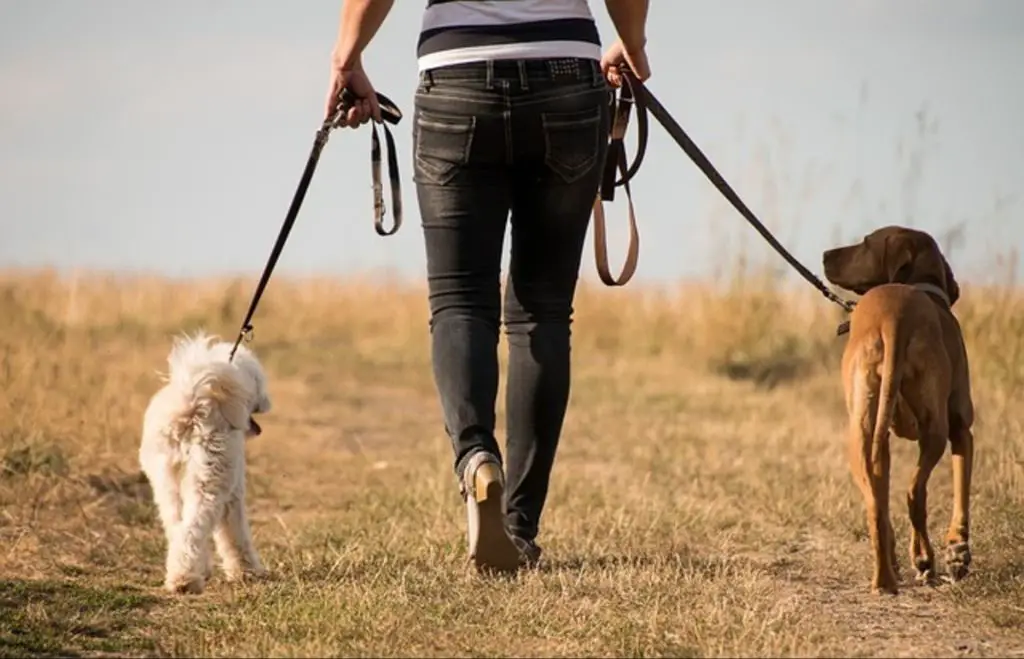1. Signs of Laziness in Dogs
Some indications that your dog may simply be lazy rather than depressed include:
- Lying around all day – Lazy dogs tend to sleep more than usual and are reluctant to get up and active.
- Not interested in walks or play – A lazy dog will be hesitant to go for walks, play fetch, or engage in activities they’d normally enjoy.
- Passing up food or treats – Whereas a depressed dog may lose their appetite, a lazy dog will still be excited for meals but less motivated by treats or snacks.
Other signs can include difficulty getting up, limping or stiffness, lack of interest in training or commands, and overall lethargy or sluggishness. A lazy dog is still capable of normal activity but simply chooses not to exert themselves (https://wagwalking.com/sense/can-dogs-be-lazy).
Signs of Depression in Dogs
Some of the most common signs of depression in dogs include:
Lethargy and loss of interest in activities – Dogs who are normally energetic may suddenly become less active and seem disinterested in things they used to enjoy like going for walks, playing fetch, or interacting with family members. They may sleep more often and avoid any kind of activity or stimulation. According to the AKC, lethargy and loss of interest are two of the most obvious signs of depression in dogs.
Changes in appetite – A depressed dog’s eating habits often change. Some dogs lose their appetite and stop eating as much, while others may start eating more. These appetite changes could lead to weight loss or weight gain. Per the WebMD article, a sudden change in your dog’s appetite, up or down, can be indicative of depression.
Anxiety or restlessness – Dogs suffering from depression may seem anxious or agitated. They may pace, pant, whine, or tremble for no reason. Some dogs have trouble settling down and relaxing. According to GoodRx, signs of anxiety like restlessness and panting can point to depression.
Aggression or other behavioral changes – Depressed dogs may become more irritable and aggressive. They may snap or growl at people or other animals when provoked even slightly. Or they may start exhibiting destructive behaviors like scratching furniture, urinating around the house, or digging up the yard. The GoodRx source notes that destructive behavior or aggression can signal depression in dogs.
Common Causes of Laziness
There are several common reasons why dogs can become lazy, including:
Lack of exercise – Dogs need regular activity and exercise to stay physically fit and mentally stimulated. Without enough exercise, they can become bored, restless, and lazy. Make sure your dog gets adequate daily walks and playtime.
Boredom – An understimulated or bored dog is more likely to seem lazy and unmotivated. Provide puzzle toys, change up walking routes, and try different games to challenge your dog’s mind. (source)

Hot weather – Dogs naturally become less active in very hot weather to avoid overheating. Make sure your dog has access to shade and cool water. Walk early or late in the day when it’s cooler.
Pain or illness – Medical issues like arthritis, injuries, or infections can make dogs unwilling to move or play. If your dog suddenly becomes very inactive, take them to the vet for an exam. (source)
Common Causes of Depression
Depression in dogs can stem from a variety of factors, some physiological and some environmental. According to WebMD (https://www.webmd.com/pets/dogs/features/depression-in-dogs), some of the most common potential causes of depression in dogs include:
Loss of Companion Animal or Owner – Dogs are highly social animals and can become very bonded with other pets or their human owners. The loss of an animal companion or owner can trigger depression in dogs, especially if they relied heavily on that relationship.
Pain or Illness – Dogs that are chronically ill or in pain may start exhibiting signs of depression, becoming withdrawn and inactive. Their mood and behavior changes in response to their discomfort or illness.
Stress/Boredom – Lack of mental stimulation and activity can lead to stress and boredom in dogs. Without proper outlets, this boredom may manifest as lethargic, depressed behavior. Ensuring regular exercise and enrichment is key.
Poor Diet – A nutrient-deficient diet lacking key vitamins and minerals may negatively impact a dog’s mood and energy levels. Providing quality nutrition tailored to your dog’s needs can help prevent dietary causes of depression.
Ways to Motivate a Lazy Dog
If your dog seems lazy and unmotivated, there are several things you can try to get them more active and engaged.
One of the best ways is simply more walks and playtime. Start with short, frequent walks of 10-15 minutes to get them moving. You can also try playing games like fetch or tug to get their heart rate up. Use praise and treats to motivate them during play.
Another great option is short 5-10 minute training sessions using positive reinforcement. Teaching new commands and tricks engages their brain and gets them focused on a task. Make it fun and reward generously.
You can also try food puzzle toys or hiding kibble around the house. These provide mental stimulation as your dog has to problem solve to get the treats. Rotate different puzzles to prevent boredom.

Finally, change up the environment. Take your dog to new parks, trails or beaches to explore new sights and smells. This provides enrichment and prevents the same old routine. New experiences will pique their curiosity.
With patience and consistency, you can get a lazy dog more motivated to move. Make it a gradual progression and keep it positive. Consult your vet if laziness persists despite lifestyle changes.
Treating Depression in Dogs
If you suspect your dog may be depressed, make an appointment with your veterinarian. They will perform a full physical exam and run tests to rule out any underlying illness causing the symptoms (source). If no medical cause is found, the vet can help diagnose canine depression and advise on treatment options.
Often the first recommendation is environmental enrichment and lifestyle changes to increase mental stimulation. Try increasing daily exercise, providing interactive toys and puzzles, enrolling in training classes, and spending more quality time together through play, training, and affection (source). Establishing a consistent daily routine can also help relieved anxiety.
Natural supplements such as melatonin, St. John’s wort, and L-theanine may help some dogs (source). Check with your vet before starting any new supplements. In more severe cases, prescription anti-anxiety or antidepressant medication may be recommended under veterinary supervision.
With patience and a multifaceted approach, many dogs can overcome depression and regain their normal happy, energetic selves. But get veterinary guidance, as untreated depression can worsen over time.
When to See the Vet
If your dog is displaying signs of persistent lethargy or depression, it’s important to rule out underlying medical issues first by taking them to the vet for a check-up. Changes in a dog’s behavior or energy levels can point to pain, illness, or other health problems that require veterinary attention.
According to the WebMD article “Depression in Dogs: Symptoms, Causes, Treatments…” https://www.webmd.com/pets/dogs/features/depression-in-dogs, you should contact your vet if your dog shows significant, prolonged lethargy or loss of appetite. These can be signs of a physical health issue, especially when paired with changes like aggression or other behavioral shifts.
Your vet can give your dog a thorough exam and run tests to diagnose or rule out any medical conditions contributing to their low energy levels or change in mood. Getting an accurate diagnosis is key before exploring behavioral or environmental causes of possible depression in dogs. It’s important not to overlook serious health issues that require prompt veterinary attention and treatment.
Tips for Active, Mentally Stimulated Dogs
Keeping your dog active and mentally stimulated is key to having a happy and healthy pet. Here are some tips for keeping your dog’s body and mind engaged:
Daily walks and playtime – Make sure your dog gets adequate exercise every day through walks, playtime in the yard, games of fetch, or joining you on a jog. Physical activity helps relieve boredom and pent up energy. Dogs that don’t get enough exercise may act out with undesirable behaviors. Aim for at least 30-60 minutes of activity per day 1.

Training sessions – Even short 5-10 minute training sessions can provide mental stimulation. Work on reinforcing basic obedience cues or teaching new tricks. The mental effort required will tire out your dog’s brain.
Food puzzles – Feeding your dog’s meals through interactive food puzzle toys adds a mental challenge at mealtime. Your dog has to figure out how to move the toy around to get the kibble out. This mimics the natural foraging behaviors of wild dogs.
Safe chew toys – Provide an assortment of safe, durable chew toys to satisfy your dog’s natural chewing instinct. Rotating the toys will keep your dog interested. Supervise your dog with any toy to prevent swallowing pieces.
Socialization – Let your dog meet and greet other dogs on walks or at the dog park. Interacting with other dogs and people provides vital mental stimulation outside the home. Always supervise interactions to ensure good behavior.
Providing a Routine
Establishing a daily routine can be very beneficial for dogs. Routines help provide structure, predictability and consistency in a dog’s life 1. Some tips for providing a good routine include:
– Feed and walk at the same times every day. Feeding at consistent times helps regulate a dog’s metabolism and supports healthy digestion 2.
– Build in playtime and bonding. Make sure to spend quality one-on-one time with your dog each day playing, training, or cuddling.

– Stick to a sleep schedule, putting your dog to bed around the same time every night.
Having a predictable routine makes dogs feel secure and comfortable. It also aids in potty training puppies and reinforces desired behaviors in adult dogs 3.
Summary
When trying to determine if your dog is lazy or depressed, look for key differences in their behavior. Signs of laziness include being mellow, seeking rest, and being slow to engage in play or training. However, lazy dogs still get excited for things like food or walks. Depressed dogs show more concerning symptoms like loss of interest in all activities, changes in appetite, and lethargy that persists even with attempts to engage them.
Be concerned if your dog is withdrawing from normal activities and social interactions for multiple days. Significant changes in their regular habits or personality can signify an underlying issue. Consult your veterinarian if you suspect your dog may be ill or in pain.
To motivate a lazy dog, use interactive toys like puzzle feeders or Kongs, engage them mentally with training sessions, and provide plenty of exercise. For a depressed dog, focus on addressing the root cause with your vet’s guidance. In addition to treatment, enrich their environment with affection, variety in toys and activities, and a consistent daily routine with opportunities to go outside.
With the proper care and enrichment, you can get your dog active and engaged in life again, whether they’re going through a temporary lazy phase or struggling with depression. Stay attuned to their needs and personality to ensure their quality of life.